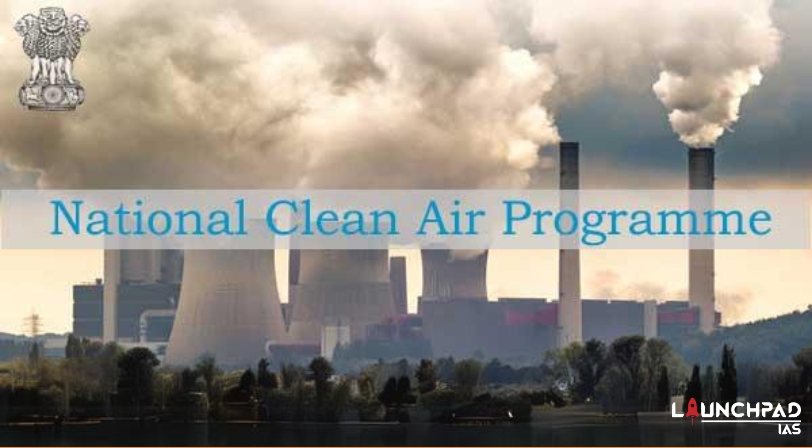What is the National Clean Air Programme (NCAP)?
- The Ministry of Environment, Forest and Climate Change (MoEFCC) initiated the National Clean Air Programme (NCAP) in January 2019.
- Its objective is to enhance air quality in 131 cities, including non-attainment cities and Million Plus Cities, spanning 24 States and Union Territories, by collaborating with all relevant parties.
- Non-attainment cities are those that have fallen short of the National Ambient Air Quality Standards (NAAQS) for over five years.
- NAAQs are the standards for ambient air quality regarding various identified pollutants notified by the CPCB under the Air (Prevention and Control of Pollution) Act, 1981.
- List of pollutants under NAAQS: PM10, PM2.5, SO2, NO2, CO, NH3, Ozone, Lead, Benzene, Benzo-Pyrene, Arsenic and Nickel.
- The program aims to attain reductions of up to 40% or meet the National Ambient Air Quality Standards for Particulate Matter10 (PM 10) concentrations by the year 2025-26.
NCAP Initiatives
- The National Air Quality Monitoring Network will be augmented.
- Air Quality Management Plan for the cities chosen.
- Indoor Air Pollution Monitoring & Management
- National Emission Inventory – this is an inventory of the quantity of pollutants discharged into the air.
- Network of Technical Institutions
- Technology Assessment Cell
- International cooperation including the sharing of best practices to abatement of air pollution.
What are the target levels?
- The NCAP initially set a target of reducing key air pollutants PM2.5 and PM10 by 20-30% in 2024, taking the pollution levels in 2017 as the base year to improve upon.
- In 2022, however, the Centre moved the goalposts and set a new target of a 40% reduction in particulate matter concentration, by 2026.
- To meet these targets, approximately ₹6,897.06 crore has been disbursed to the cities by the government.
- For administering funds, the Central Pollution Control Board (CPCB), which coordinates the program, looks at a city’s PM10 levels – the relatively larger, coarser particles.
- However, PM2.5 – the smaller, more dangerous particles – aren’t monitored as robustly in all cities, mostly due to the lack of equipment.
- Cities must quantify improvement starting from 2020-21, which requires a 15% and more reduction in the annual average PM10 concentration and a concurrent increase in “good air” days to at least 200.
- Anything fewer will be considered ‘low’ and the funding, provided by the Centre via the Ministry of Environment, will be reduced consequently.
- Particulate Matter
- Also called particle pollution, it is a term for a mixture of solid particles and liquid droplets found in the air.
- It includes:
- PM10: inhalable particles, with diameters that are generally 10 micrometers and smaller; and
- PM2.5: fine inhalable particles, with diameters that are generally 2.5 micrometers and smaller.
- Sources of PM: Some are emitted directly from a source, such as construction sites, unpaved roads, fields, smokestacks, or fires.
Most particles form in the atmosphere as a result of complex reactions of chemicals such as sulfur dioxide and nitrogen oxides, which are pollutants emitted from power plants, industries, and automobiles. - Harmful Effects: Small particles less than 10 micrometers in diameter pose the greatest problems, because they can get deep into the lungs, and some may even get into the bloodstream. Particle pollution exposure has been linked to a variety of problems, including irregular heartbeat, aggravated asthma, decreased lung function, and increased respiratory symptoms, such as irritation of the airways, coughing, or difficulty breathing.


